Family : Chaetodontidae

Text © Giuseppe Mazza

English translation by Mario Beltramini
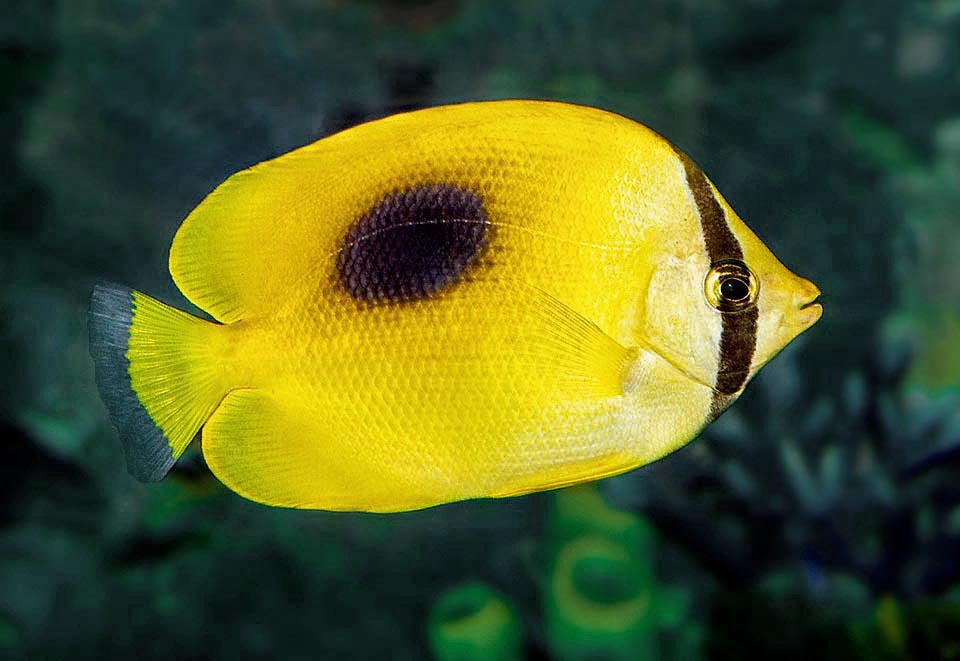
Chaetodon speculum is present in the tropical waters of a good part of the Indian Ocean and in western Pacific © Giuseppe Mazza
The Oval spot butterfly fish (Chaetodon speculum Cuvier, 1831) belongs to the class of the Actinopterygii, the ray-finned fishes, to the order of the Perciformes and to the family of the Chaetodontidae that hosts about 90 butterflyfishes.
The name of the genus Chaetodon comes from the Greek “χαίτη” (khaite) = hair and “ὀδούς” = tooth, due to the teeth shaped like bristles, whilst that of the species, speculum, in Latin means mirror, because of that oval spot it has on the sides looking like a mirror.
Zoogeography
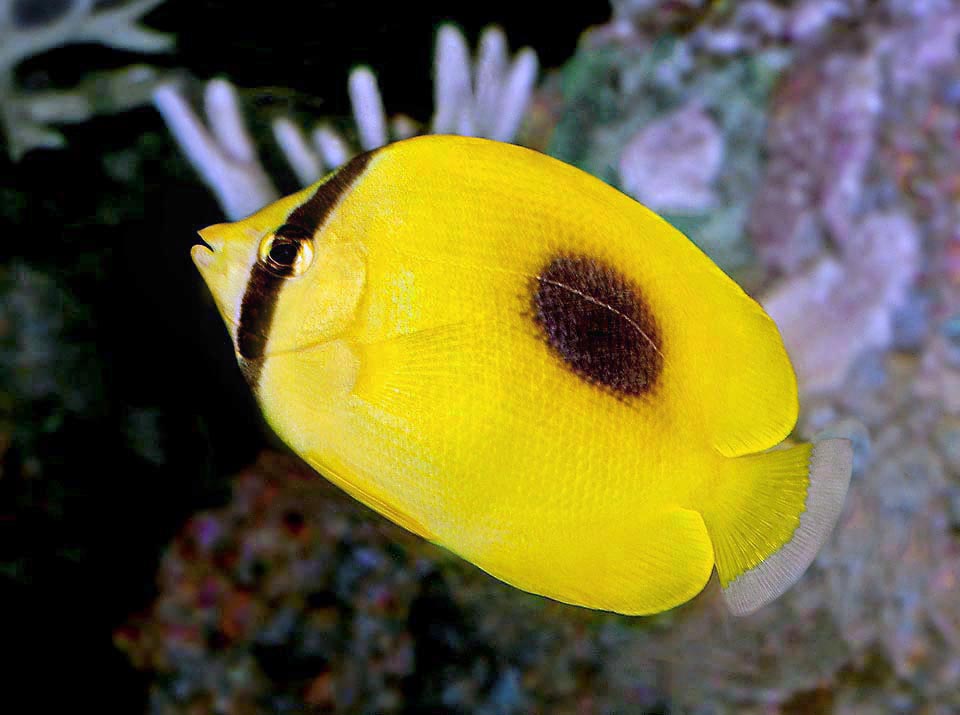
Up to 18 cm long, it gets the scientific name from the characteristic oval black spot on the sides, evoking the shape of a mirror © Giuseppe Mazza
Chaetodon speculum is present in the tropical waters of a good part of the Indian Ocean and in western Pacific.
We find it along the coasts of Madagascar and in the adjacent islands of Réunion and Mauritius. Then, indicatively, eastwards, in India, Christmas Island, Malaysia, Indonesia, Philippines, Vietnam, China, Taiwan with RyuKyu islands, Palau, Papua New Guinea, in the Australian Great Barrier Reef, New Caledonia, Micronesia, Vanuatu, Fiji and Tonga which marks the eastern limit of the species.
Ecology-Habitat
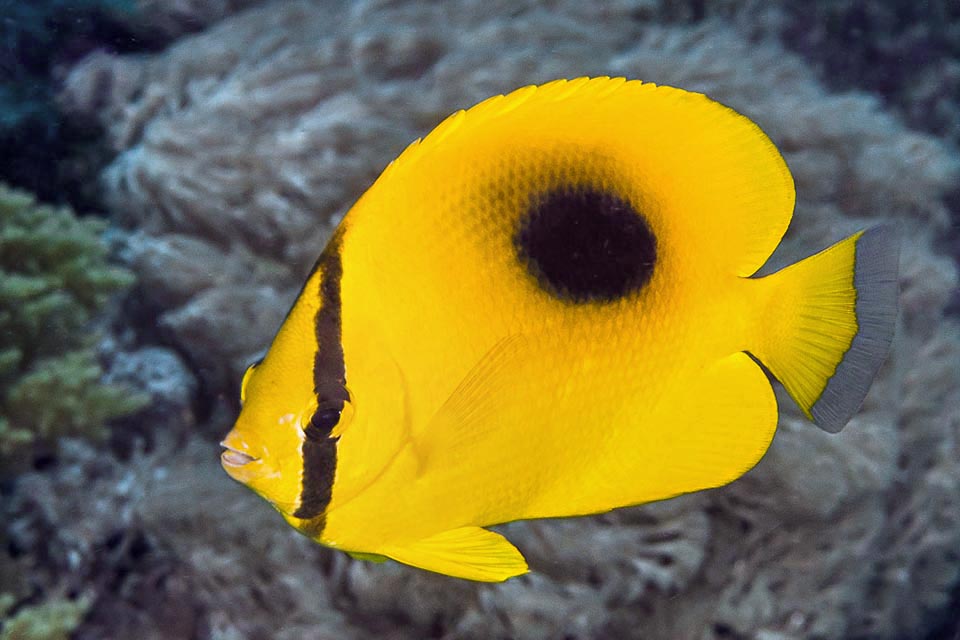
It lives in relatively shallow waters, usually at 10-15 m of depth, but can be found also at 3 m and can go down up to 30 m © François Libert
Chaetodon speculum swims in relatively shallow waters, in the lagoons and on the outer side of the reefs, between 3 and 30 m of depth, but more often around the 10-15 m, among madreporic formations rich of Corallimorpharia, fungal-shaped cnidarians commonly known as “mushroom anemones”.
Morphophysiology
It may reach the 18 cm. The body, oval and flat laterally as in most of the cases of Chaetodon, has a relatively short snout.
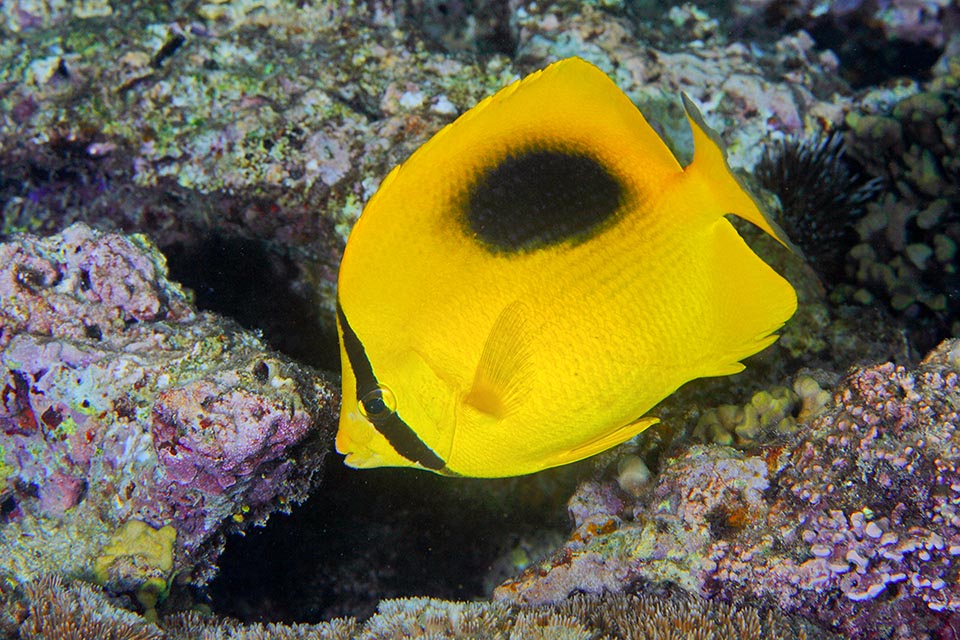
Here it is in the light-shade of a bottom. The black band on the bright yellow hides the eye breaking the outline of the fish and the great faded spot looks like a ravine © Klaus Stiefel
The background colour is yellow with the usual black vertical band that hides the eye and a big black oval spot, on the sides, in the upper part of the body. Unusual pattern, present also in the Chaetodon bennetti, where however these two spots are edged of light blue with two long brushstrokes of anologous colour, well visible, that cross the belly from the operculum to the anal fin.
The dorsal fin, erectile when the fish feels to be menaced, has 14 spiny rays and 17-18 soft ones, whilst the anal has 3 spiny rays and 15-16 soft. The pectoral ones have 14-16 unarmed and are translucent as the terminal part of the caudal fin, being the rest yellow.
During the night the splendid livery disappears and the fish gets whitish, keeping however the characteristic black spot on the sides.
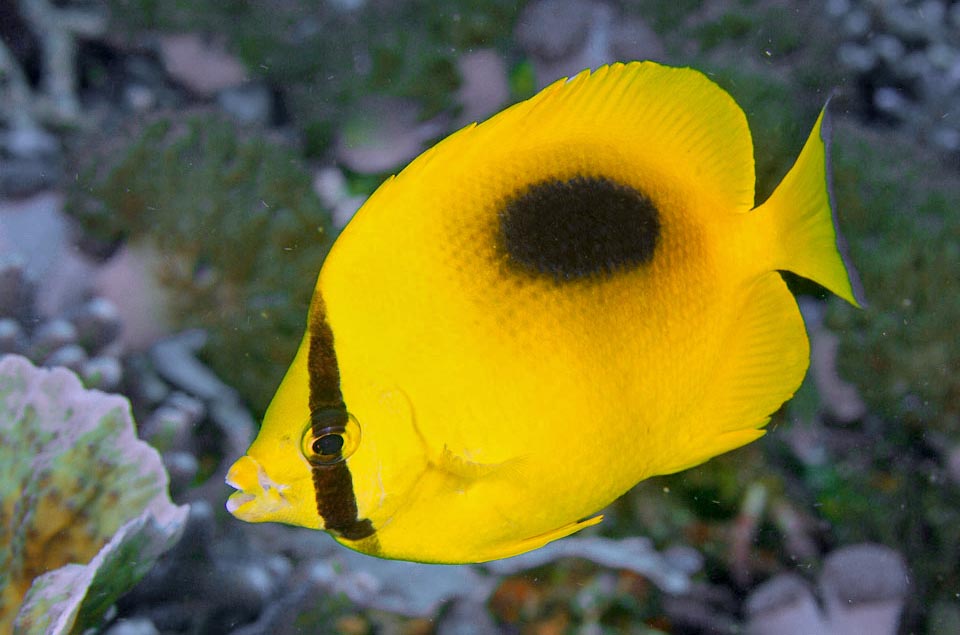
Chaetodon speculum eats mainly Cnidarians, polyps of madrepores and anemones fungus, but also eats small invertebrates it finds among the corals © Paddy Ryan
Ethology-Reproductive Biology
The Oval spot butterfly fish nourishes of polyps of madrepores, anemones fungi and hydrozoans, but also of small crustaceans and other benthic invertebrates it finds rummaging between the corals. It reaches the maturity in the second year of life and then often form stable couples.
For the marriage the spouses often get up to the surface and the fecundation takes place mid-water, with the eggs fecundated on the flight by the male and then abandoned to the currents.
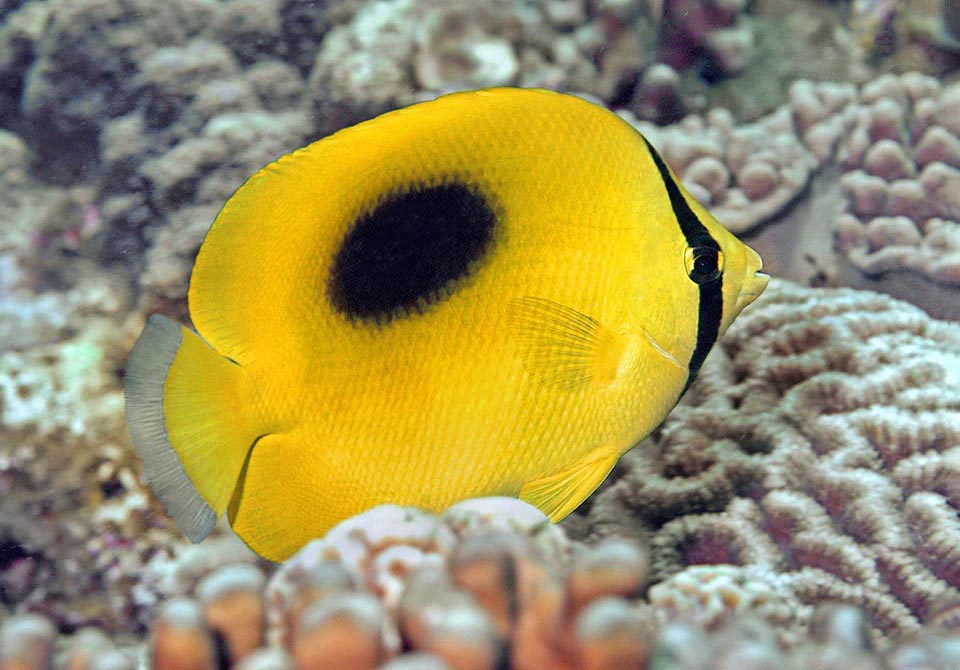
With populations that may double in less than 15 months and a very low index to fishing vulnerability, nowadays it is not an endangered species © Klaus Stiefel
They hatch on the following day and the pelagic larvae go drifting for a couple of months until when the small fishes are able to swim and move towards the bottoms. They are about 12-15 mm long and often get shelter among the arms of the arborescent corals where they grow up hidden among the sharp points that discourage the predators.
In case of need, the populations may double in less than 15 months their members and the fishing vulnerability index marks only 10 on a scale of 100. Since 2010 Chaetodon speculum has therefore been listed as “LC, Least Concern” in the IUCN Red List of endangered species.
Synonyms
Nalbantius speculum (Cuvier, 1831); Chaetodon spilopleura Cuvier, 1831; Chaetodon ocellifer Franz, 1910.
→ For general information about FISH please click here.
→ For general information about BONY FISH please click here
→ For general information about CARTILAGINOUS FISH please click here.
→ To appreciate the BIODIVERSITY of BONY FISH please click here.
→ To appreciate the BIODIVERSITY of CARTILAGINOUS FISH please click here.
